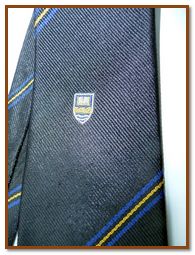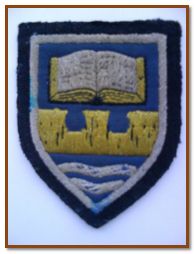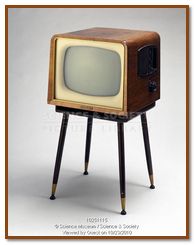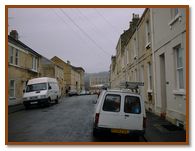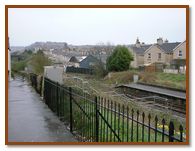The Chemistry laboratory was separated from the classroom…the gallery classroom…with its tiers of seats…by a corridor some 4 feet wide…this was very fortunate for us pupils…it was less fortunate though for the then Janitor of our School…and the Teacher to whom we were all trying to pay attention…
There we were ..exposed to the elements…well a certain part of one of us was… to the O² H° N¹ of the room …this particularly unlucky individual was carrying out a personal experiment of his own…under the apparent safety of the desktop…he was impersonating a Jack Hammer operator at the time… and he was ordered to leave the room with his trouser fly buttons undone…much to his embarrassment, he was ordered to stand in the corridor outside for the duration of the ensuing lesson…He was the only one who saw what happened next !
Previous to this little episode of personal gratification…we pupils were assembled in this magnificent modern Chemistry Laboratory…which was equipped with all the very latest technology, and fitted with superb long mahogany topped benches…with sinks and water supplies …dotted around the benches were these pairs of cast iron three legged trivets…under which were placed metal tubes...attached to said tubes were pink rubber hoses ..connected to taps...gas taps …pairs of gas taps…back to back..
Mr. Bunsen…famous then, and whose name is now probably known by every school child today…invented this particular tube shaped device to combine coal gas …or " Town Gas "…( as it later became to be known ) and the components of every day, ordinary, run of the mill air ...this chemical combination process was enhanced with the aid of the use of a combustion process initiated with the aid a lighted wooden splint to produce the following results…
Combine some of the elements of the ancient carboniferous compound… ( from which the gas was extracted ) and the chemical elements present in our atmosphere and the following items will be produced….Visible light emissions…Low frequency radiation in the form of heat…carbon monoxide and dioxide gases …together with a very minute quantity of the native product …Carbon…or " Lamp Black " as it came to be commonly called in the 19th Century.
The master of our class had elements of safety practises on his agenda that particular day as well…and as a result…we pupils were shown how to avoid contact with this very hot flame being produced by Mr. Bunsens burner…" Close off the air mixture control valve to ensure a tall visible yellow flame when you have finished heating your chemicals "…was the advice given to us naïve pupils ...sound advice you might think…nice big easily visible yellow flame …much cooler as well…no danger now to our soft sensitive little bodies…job done..
Well there you have it then… got to it at last… the job was far from being done…the Lab ceiling was being done ! …that’s what was being done that day…well whitened again, in the evening of course, while we were at home…some clever person ( who shall remain nameless ) left all the Bunsen burners on flat out with a nice bright yellow flame…and what does this flame produce a lot of in those conditions you ask?…SOOT…or " lamp black "…you takes your pick as Michael Miles used to say.!….
Another " black day " at the Bath Tech. for boys!
Lesson 1 – I am introduced to a Bending Machine and a piece of Tin 4" x 3" or thereabouts, I am asked by the teacher to make lines on this tin, and to cut off the 4 corners at 45 degrees. Then the metal is to be placed under the machine and " hey Presto ", it`s now folded in on one edge, this is repeated for the other edges.
I present this sad looking piece of rectangular metal to the Teacher for inspection., Whereupon I am informed that I may place Marks on the Metal using metal Letter punches, letters which form my initials and surname. Proud as punch I now head off to the pillar drill with the intention of piercing a hole in aforementioned tin. The tin at this point refuses to lie still and be killed quietly, it, and the drill bit embrace each other and proceed to remove large quantities of skin from the appendages which previously were my hands.
A large & heavy red hot soldering Iron and I are brought together in a pot of Flux, and I am slowing understanding the process of heat conduction and metal flow all in one go. I have soldered myself to the Iron, and the stiff copper metal at the same time !
After usuing up all the availalble solder to make this copper ring, (some 1" (25mm) in diameter), which by now is very hot ! It is now firmly fitted through the previously mentioned hole in the Tin. The ring is going to be used to thread some suitable flexible material through ... in due course.
Eventually, I triumph, sanity and normality is restored again. I am presented by the teacher with a piece of steel wire, to thread through the copper ring. I am an Engineering Technician now, I have made my name plate to attach to my future work !
Lesson 2 – With all things metal, there is a need to make a mark on them with a device called a scribe, this singularly painful torture is imposed on the metal as a necessity because of its unnerving natural ability to change size and or shape at will. I guarantee you that as soon as you cut into it with a Hacksaw it will become 10% smaller than when you measured it last.!
(Where are we?, oh I remember) – The thing that all aspiring Engineering Technicians need next in their toolkit is the Straight Edge, this starts off life as a regular shaped piece of Steel and ends up as a wavy edged piece of metal resembling a Comb with no teeth. That is how mine ended up anyway !. The only good looking thing about it was the Pretty pattern of overlapping circles that we were shown how to apply with the aid of the trusty pillar drill, and the Engineers nightmare product, Emery Paper wrapped round the end of a stick. Apply a little oil, Voile !, There you have it , a fully featured tool kit in two easy lessons.!!!
Lesson 3 – I am not a keen gardener, I count myself in the majority here, but I am forced by this man to roll a small rectangular piece of metal through what can only be described as a very large mangle, this beast is a mean machine and requires the attention of no less than two pupils, ( Yes TWO pupils ), to make it perform. Slowly we turn this knob on the top which much to our dismay only makes the machine more difficult to use, after we have attached FOUR pupils to the handle we eventually get the machine to submit, and it spits out our piece of metal in a super cool curve that any Jaguar owner would die for as part of the bodywork on his car just above the front headlights.
In this pristine curve of metal, we are now forced by the master to return to the Mincing machine, ( Sorry , the Pillar Drill ), and made to attempt keyhole surgery with the intent of riveting another piece of metal which has undergone an equally tortuous sequence of treatment in the Smithies Forge, ( Bit like being Cremated but you come back out in one piece, but a different colour.) This other part is alien to the first piece, because unlike the gentle bending, it has had seven bells knocked out of it on an Anvil and has been forced to take on the shape of Concorde !, what part does this piece play you ask, well it is for the handle that you made in woodwork the week before !. If you got it right you have a Trowel, if not then you had a super silent rattle to take to football matches.!
Lesson 4 – You know those gardeners who grow vegetables in nice looking super straight ,(I have just ironed this one ) rows?, where on earth do you suppose they get the tool to do the job?, off the Railway bank near Stuart Place that’s where.!, (Well Ian not being generous to anyone), my guess is that you forgot about this simply because you were too scared to take it home, were you not? (I wanted to put weren`t you ,but Word keeps putting those stupid red lines underneath words that we understand but it doesn`t, see?, it`s done it`s own thing agin !)
Back to the plot, I won`t (sorry ,will not) bore you stupid for much longer, suffice to say that much metal has suffered so long for so few finished products, we have tamed the wobbly garden with our mobile pointy letter
" H " and " I " with rings on top, to show the world we mean business !!
Use Browser "Back" Button to return to previous page - To 1962

